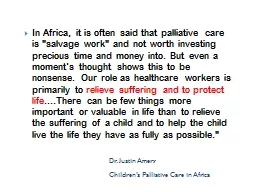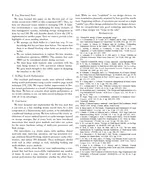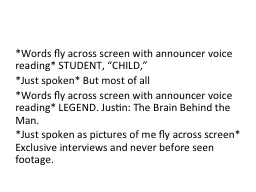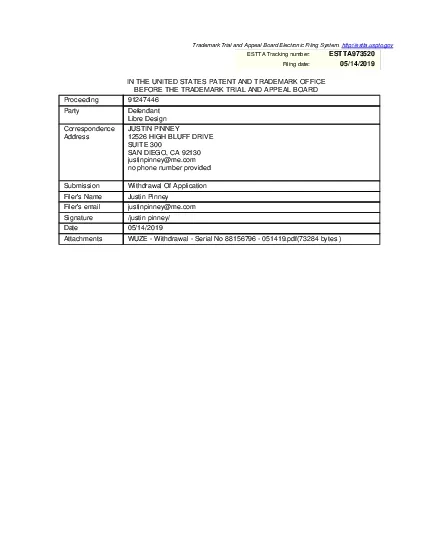PPT-Dr. Justin Amery
Author : myesha-ticknor | Published Date : 2017-07-24
Childrens Palliative Care in Africa In Africa it is often said that palliative care is salvage work and not worth investing precious time and money into But even
Presentation Embed Code
Download Presentation
Download Presentation The PPT/PDF document "Dr. Justin Amery" is the property of its rightful owner. Permission is granted to download and print the materials on this website for personal, non-commercial use only, and to display it on your personal computer provided you do not modify the materials and that you retain all copyright notices contained in the materials. By downloading content from our website, you accept the terms of this agreement.
Dr. Justin Amery: Transcript
Download Rules Of Document
"Dr. Justin Amery"The content belongs to its owner. You may download and print it for personal use, without modification, and keep all copyright notices. By downloading, you agree to these terms.
Related Documents














